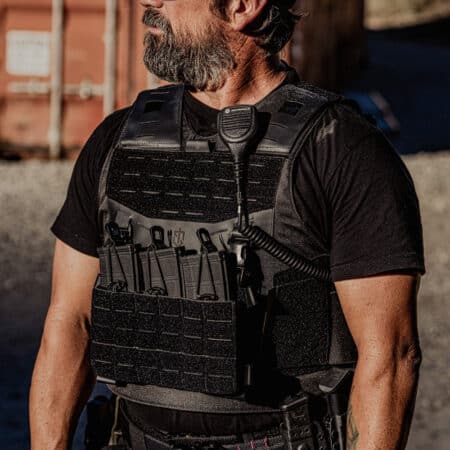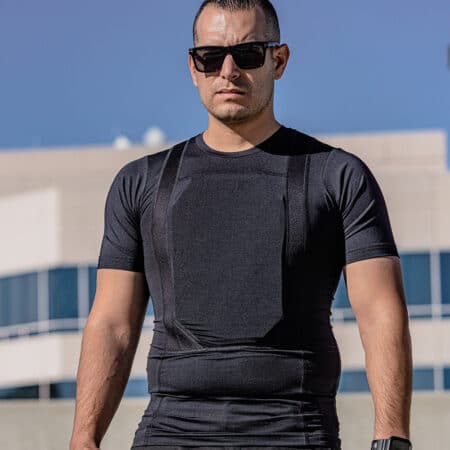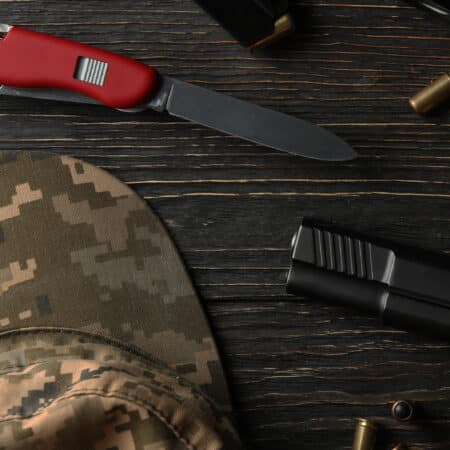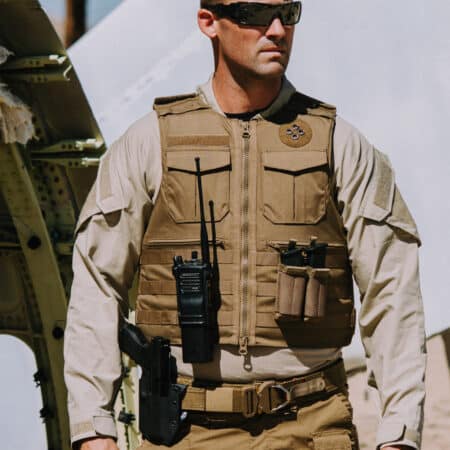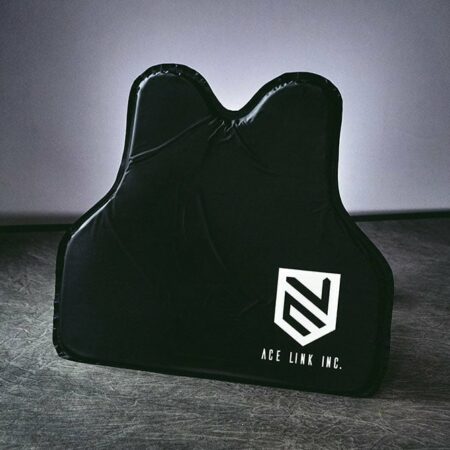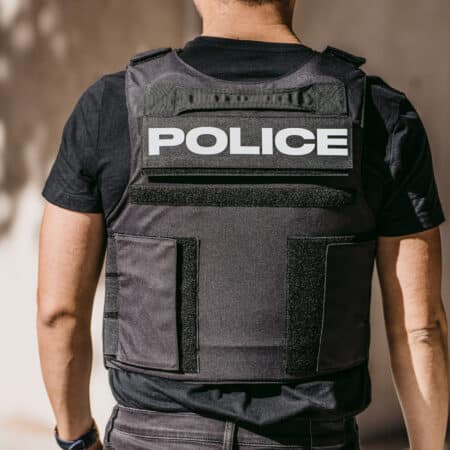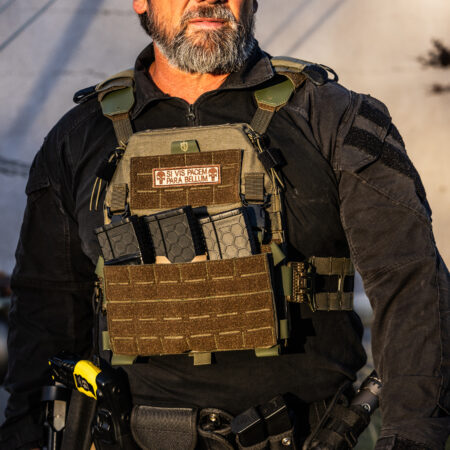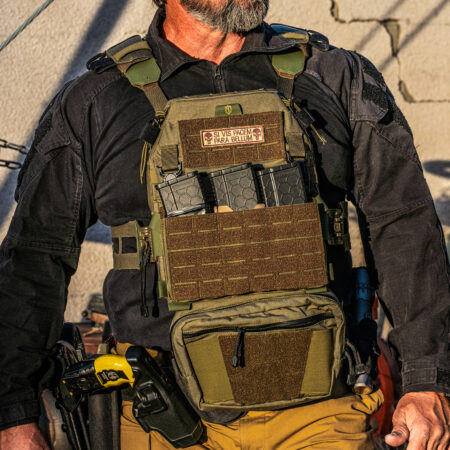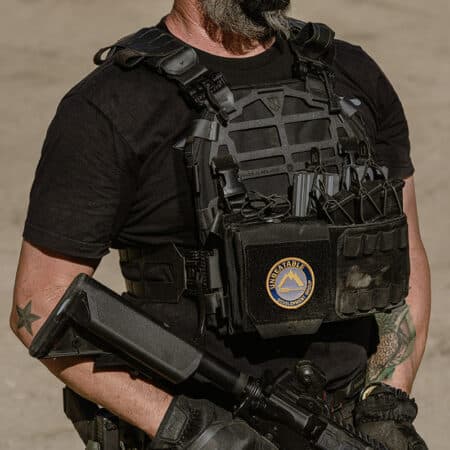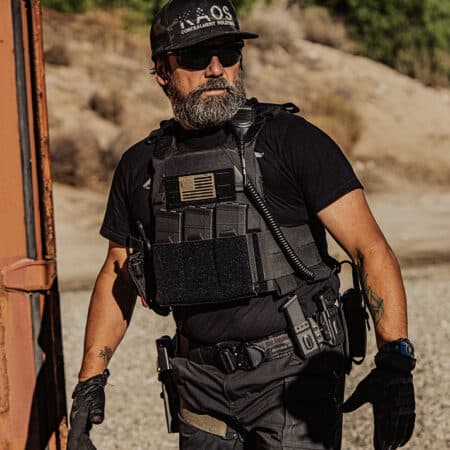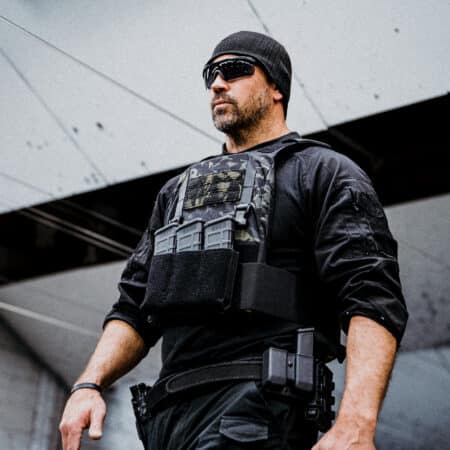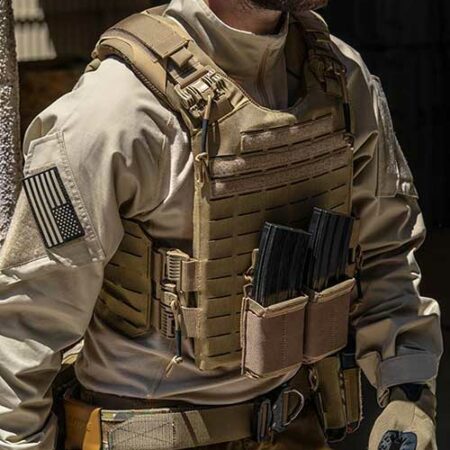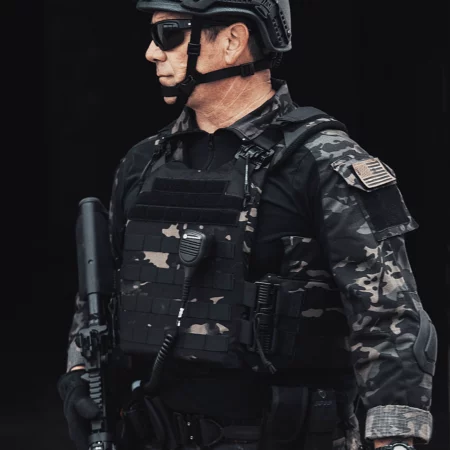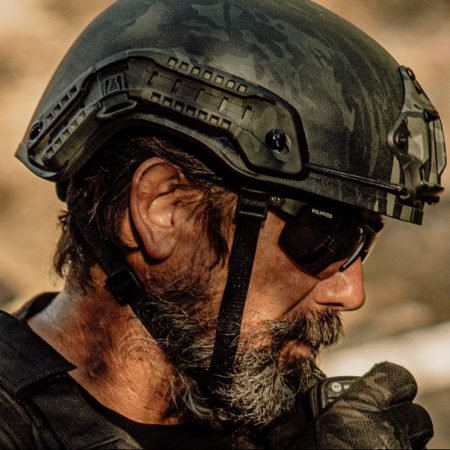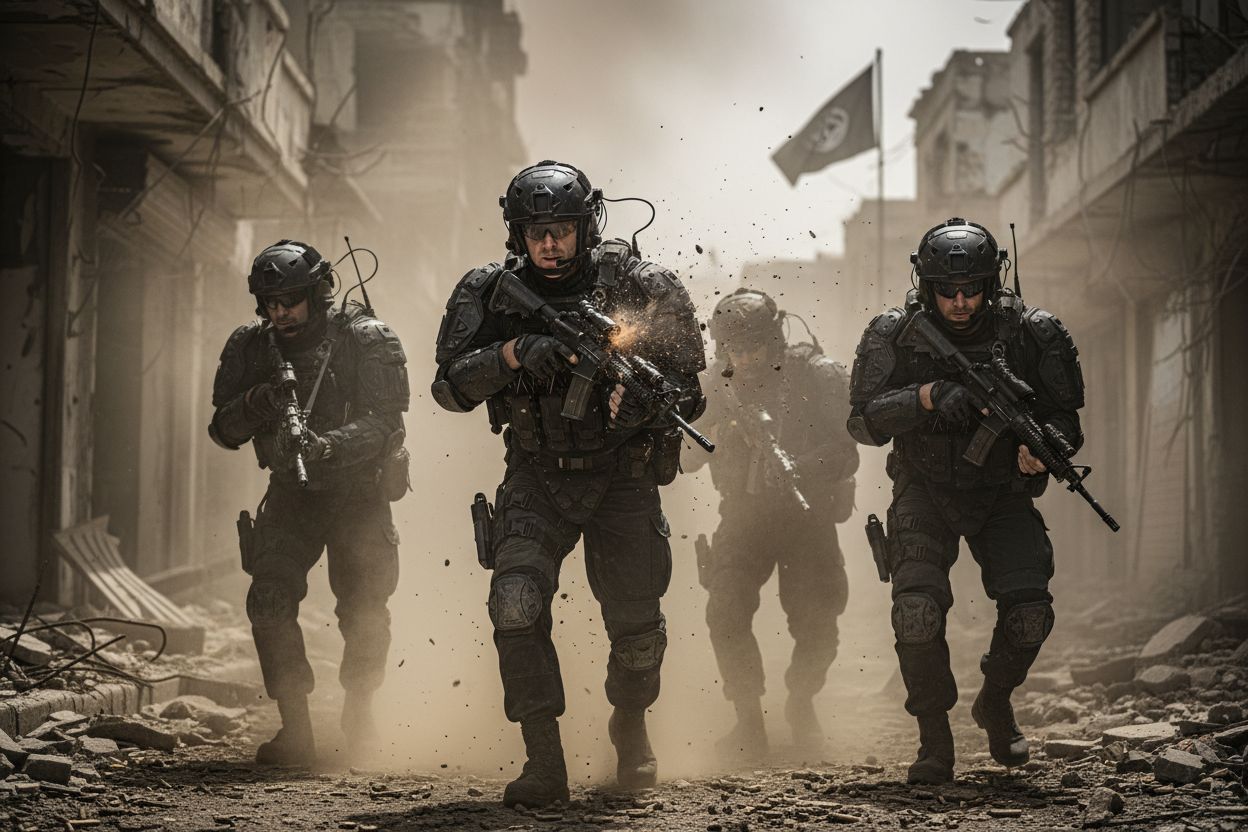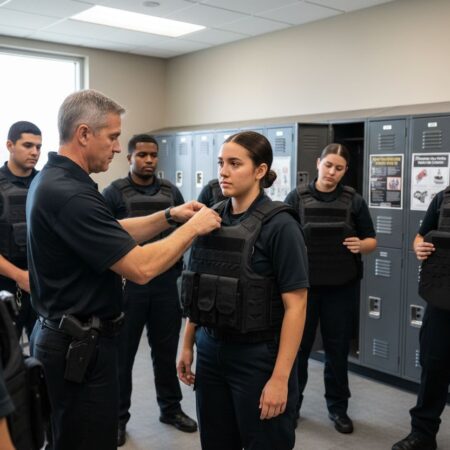- Key Takeaways
- Table of Contents
- Defining Fragments Protection in Body Armor
- Types of Fragmentation Protection Threat Levels
- How Body Armor Stops Fragments
- Ballistic Standards and Certification Requirements
- Common Mistakes about Fragments Protection
- Take Action Against Fragment Threats with Trusted Protection
- Frequently Asked Questions
- Recommended
Did you know that over 70 percent of battlefield injuries are caused by explosive fragments, not bullets? This startling statistic highlights why choosing the right body armor matters for both professionals and civilians. Fragment threats are unpredictable and far more complex than straightforward gunfire, so not all armor offers the same defense. Knowing what sets fragments protection apart can make a critical difference in safety, offering practical knowledge to help you select gear that matches real-world risks.
Key Takeaways
| Point | Details |
|---|---|
| Fragment Protection | Essential in body armor to counter explosive fragmentation, ensuring effective defense beyond standard bullet resistance. |
| Threat Classification | NATO’s STANAG 2920 outlines six fragmentation levels, each varying in velocity and protection requirements, crucial for appropriate armor selection. |
| Material Functionality | Modern body armor employs a multilayered approach combining soft and hard materials to efficiently absorb and disperse energy from potential projectiles. |
| Informed Purchasing | Buyers should assess specific threat scenarios and avoid prioritizing cost over performance to ensure selected armor meets rigorous protective standards. |
Table of Contents
- Defining Fragments Protection In Body Armor
- Types Of Fragmentation And Threat Levels
- How Body Armor Stops Fragments
- Ballistic Standards And Certification Requirements
- Common Mistakes And Purchasing Considerations
Defining Fragments Protection in Body Armor
Fragments protection represents a critical defensive capability in modern body armor design, focusing on safeguarding wearers from the often unpredictable and lethal threat of explosive fragmentation. Fragmentation protection goes beyond traditional bullet resistance, addressing a complex range of potential injury mechanisms from high-energy projectile dispersal.
Traditionally, flak jackets pioneered this protective approach, originally developed to shield military personnel from shell fragments, grenade shrapnel, and low-velocity projectile threats. According to research from military equipment archives, these early protective garments used layered ballistic fabrics like nylon to absorb and distribute fragment impact energy, establishing the foundational principles of modern fragment defense.
Modern body armor has significantly advanced these protective technologies. Our comprehensive V-50 testing guide reveals how contemporary systems integrate multiple material strategies to neutralize fragment threats. Key protective features include:
- Multi-layered aramid and metallic composites
- Energy absorption capabilities
- Distributed impact resistance
- Engineered to stop irregular fragment trajectories
At its core, effective fragments protection requires understanding that not all threats are uniform ballistic projectiles. The goal is creating a defensive barrier that can rapidly dissipate and neutralize unpredictable fragment energy across the torso and critical body regions. By combining advanced materials science with precision engineering, modern body armor transforms fragment protection from a basic concept into a sophisticated defensive technology.
Types of Fragmentation Protection Threat Levels
Fragmentation threats represent a complex and dynamic range of projectile dangers that body armor must effectively neutralize. These threats are not uniform, spanning from low-velocity shrapnel to high-energy explosive dispersals that can cause catastrophic injury. Understanding these variations is crucial for selecting appropriate protection.
According to NATO’s STANAG 2920 standard, fragmentation protection is systematically classified across six distinct levels (F1 to F6), each defined by the V₅₀ velocity – the speed at which a fragment-simulating projectile has a 50% probability of penetrating protective material. These levels range from approximately 400 meters per second at the F1 level to around 650 meters per second at the F6 level, providing a comprehensive framework for assessing fragment resistance.
Key fragmentation threat categories include:
Here’s a comparison of fragmentation threat types and their typical characteristics:
| Threat Type | Typical Velocity | Source of Fragments | Primary Risk |
|---|---|---|---|
| Blast Fragments | High (400-650 m/s) | Explosives, Bombs | Deep Penetration |
| Secondary Projectiles | Variable (Medium-High) | Environmental Debris | Laceration, Puncture |
| Structural Fragments | Medium | Building Materials | Blunt Trauma, Cuts |
| Engineered Fragments | High, Consistent | Grenades, Shells | Shrapnel Injury |
- Blast Fragments: High-velocity debris from explosive detonations
- Secondary Projectiles: Shrapnel generated from environmental materials
- Structural Fragments: Debris created by impact or structural failure
- Engineered Fragments: Intentionally designed fragmentation weapons
Our detailed V-50 testing protocols reveal that military and law enforcement professionals must consider multiple factors when evaluating fragment protection. These include projectile mass, velocity, material composition, and potential impact angles.

The complexity of fragment threats demands a nuanced, multi-layered approach to personal protective equipment design, especially in ballistic helmets.
How Body Armor Stops Fragments
Fragment protection in modern body armor is a sophisticated dance of material science and energy management, designed to neutralize potentially lethal projectile threats through intelligent design. The core objective is transforming destructive kinetic energy into a dispersed, manageable force that prevents penetration and minimizes potential injury.
Historically, flak jackets pioneered this approach by using multiple layers of ballistic nylon. According to research on protective equipment, these early designs incorporated up to twelve fabric layers with strategic stiffeners, creating a complex energy-absorption system that could slow and trap fragment impacts. By distributing the violent energy across multiple material interfaces, these jackets could effectively prevent direct penetration.
Modern body armor takes this principle to an advanced level, combining soft and hard material technologies:
- Soft Layers (Kevlar, para-aramid): Deform and catch fragments
- Hard Plates (ceramic, composite): Break or deflect high-velocity threats
- Multi-Layer Design: Creates progressive energy absorption
- Material Stratification: Prevents direct projectile transmission
Our NIJ Rated Level IV Armor Plates exemplify this sophisticated approach. By engineering materials that can dynamically respond to different fragment velocities and compositions, modern body armor transforms passive protection into an active defensive system. The goal is not just stopping a projectile, but intelligently managing its destructive potential before it can harm the wearer.
Ballistic Standards and Certification Requirements
Ballistic standards represent the critical framework that ensures body armor provides reliable, consistent protection across diverse operational environments. These rigorous testing protocols are not just bureaucratic checkboxes, but life-saving scientific measurements that determine an armor system’s genuine defensive capabilities.
According to the National Institute of Justice (NIJ) standards, the United States maintains the only nationally accepted standard for body armor performance through the NIJ Standard 0101.07. This comprehensive testing framework involves extensive performance evaluations and compliance testing conducted by accredited laboratories, with critical follow-up inspections spanning five years to verify continued workmanship and ballistic performance.
Key certification requirements include:
- Performance Testing: Rigorous evaluation against specific threat projectiles
- Velocity Verification: Confirming protective capabilities at defined speeds
- Material Durability: Assessing long-term structural integrity
- Environmental Resistance: Testing across temperature and humidity ranges
Our Level 3+ Ceramic Multi-curve Plates exemplify modern certification standards. The NIJ Standard 0123.00 further defines specific protection levels – from handgun (HG1, HG2) to rifle (RF1, RF2, RF3) classifications – ensuring that each armor system is precisely matched to its intended threat environment. This meticulous approach transforms body armor from a simple protective garment into a scientifically engineered defensive technology.
Common Mistakes about Fragments Protection
Fragment protection body armor represents a significant investment in personal safety, and making an uninformed purchase can have potentially life-threatening consequences. Understanding common mistakes helps professionals and civilians alike make more intelligent, strategic protection decisions that genuinely safeguard against real-world threats.
Most buyers fall into predictable traps when selecting body armor. They often prioritize cost over performance, assuming all protective gear offers equivalent protection. This misconception can lead to choosing inadequate armor that fails under critical circumstances. Proper fragment protection requires understanding your specific threat environment, assessing potential projectile velocities, and selecting armor engineered to handle those precise challenges.
Key purchasing considerations include:
- Threat Assessment: Accurately map potential risk scenarios
- Protection Level Matching: Select armor matching specific threat requirements
- Comfort and Mobility: Ensure wearability doesn’t compromise protection
- Maintenance Requirements: Understand long-term care and replacement intervals
- Legal Compliance: Verify local regulations regarding armor ownership
Our NIJ Rated Level IV Armor Plates demonstrate the importance of professional-grade selection. Critically, fragment protection isn’t a one-size-fits-all solution. Professionals must consider factors like weight, coverage area, material composition, and potential environmental stressors. The most expensive armor isn’t necessarily the best – true protection comes from intelligent, context-specific selection that balances performance, comfort, and operational requirements.
Take Action Against Fragment Threats with Trusted Protection
You have learned how unpredictable and devastating fragmentation threats can be. The pain points are clear. Standard protection is not enough. Real safety comes from gear that exceeds simple bullet resistance and that is certified to defend against high-velocity fragments and shrapnel. Your life and mission demand armor that meets rigorous testing like V-50 standards and carries trusted NIJ certification.
Do not wait for uncertainty to put you at risk. Visit AcelinkArmor.com to explore practical, military-grade solutions engineered to address real-world fragmentation dangers. Ready to upgrade your defense? Discover proven options like our Level 4 Armor Plates or read our V-50 testing guide to find the best fit for your needs. Choose reliable protection now and move forward with confidence.
Frequently Asked Questions
What is fragmentation protection in body armor?
Fragmentation protection is a defensive capability in body armor designed to safeguard wearers from explosive fragmentation, which includes shell fragments and shrapnel. It addresses potential injury mechanisms from high-energy projectiles, beyond traditional bullet resistance.
How does body armor stop fragments?
Modern body armor stops fragments by using a combination of soft and hard materials. Soft layers deform and catch fragments while hard plates break or deflect high-velocity threats. This multi-layer design creates progressive energy absorption, effectively managing the impact force before it can penetrate.
What are the different types of fragmentation threats?
Fragmentation threats include blast fragments from explosive detonations, secondary projectiles from environmental debris, structural fragments from building materials, and engineered fragments from fragmentation weapons like grenades and shells. Each type poses different injury risks that body armor must mitigate.

What are the certification requirements for ballistic body armor?
Ballistic body armor must meet the U.S. National Institute of Justice (NIJ) standards, which involve rigorous performance testing against specific threat projectiles, velocity verification, material durability assessments, and environmental resistance testing to ensure consistent protection across various conditions.
Recommended
- V-50 Testing: Fragments Protection of Body Armor – Ace Link Armor
- Understanding UHMW PE vs. Aramid for Bulletproof Vest – Ace Link Armor
- Advanced Body Armor: Protection Explained – Ace Link Armor
- How to Choose Bulletproof Helmet for Optimal Protection – Ace Link Armor





